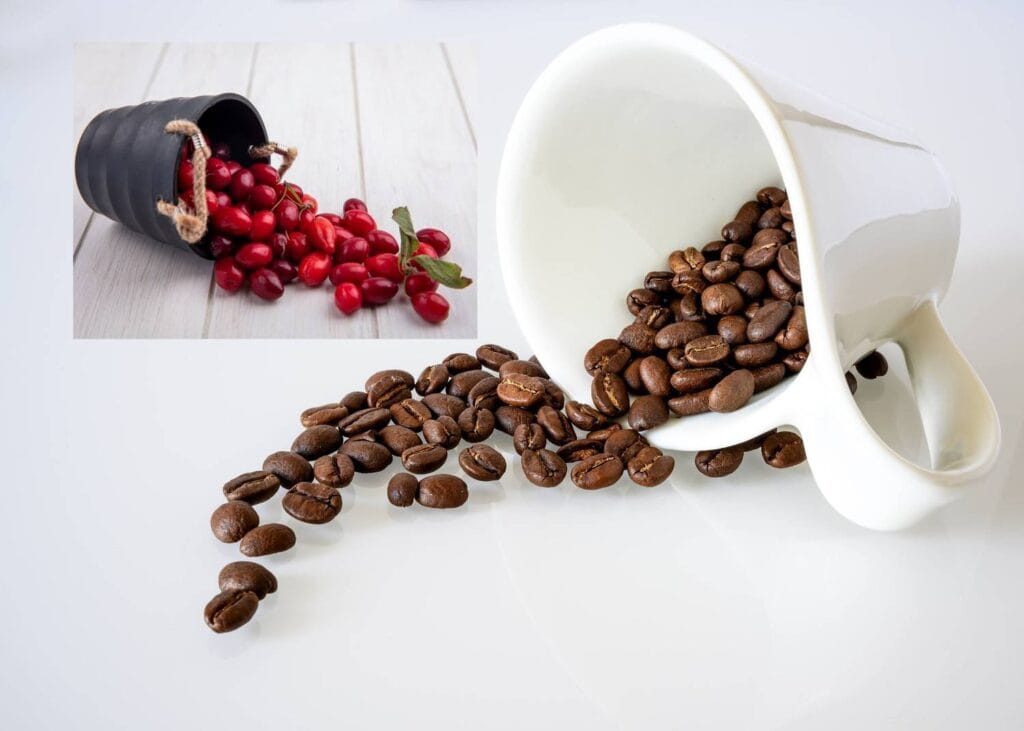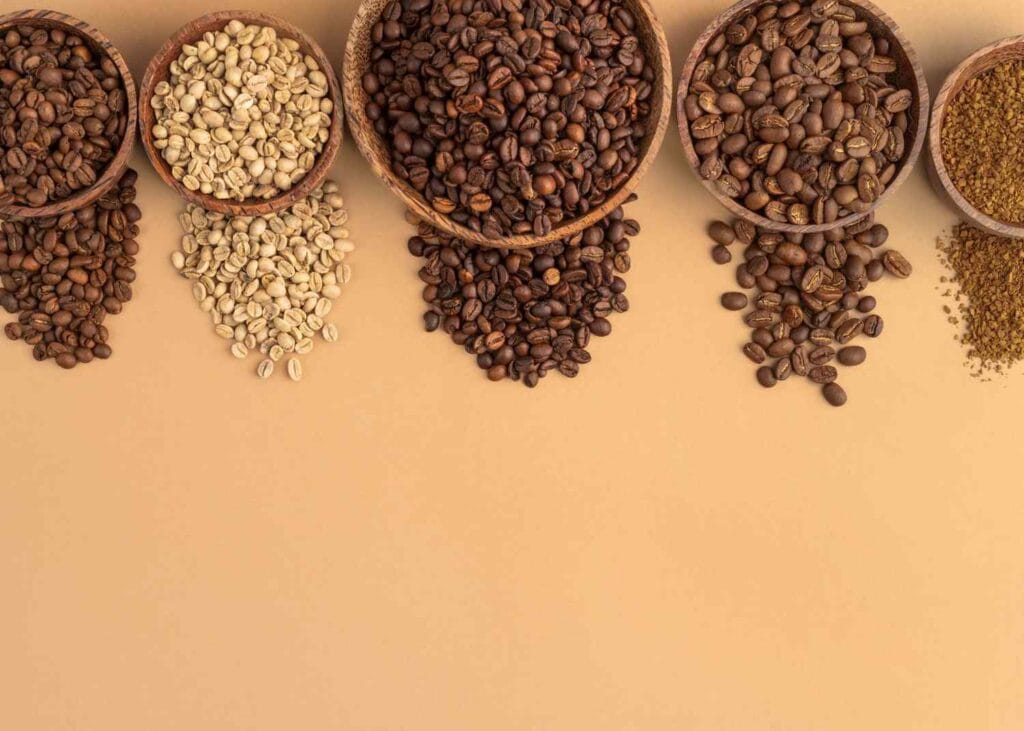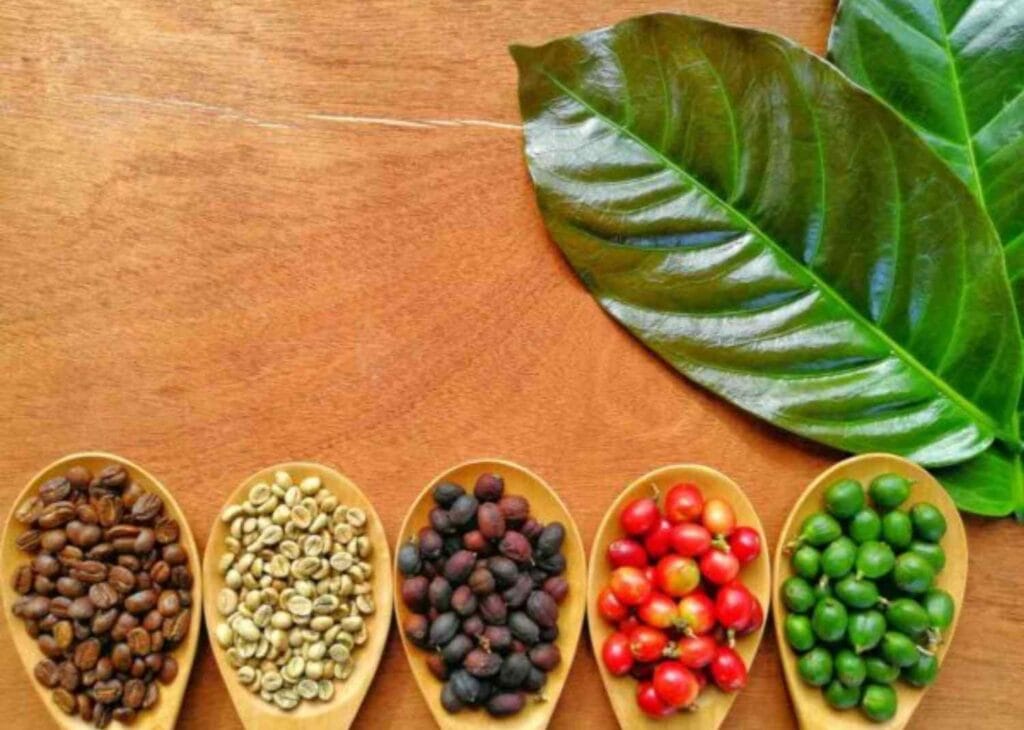How Much Caffeine in One Coffee Bean? Best Guide
One morning, while sipping your hot coffee, a thought struck your mind, “How much Caffeine in one coffee bean?” True right? These sudden thoughts must be answered rightly, so let me cite the facts and bust all the myths for you.
What is Caffeine?
Many people seek coffee when they feel tired or want to focus on some important tasks, I know you do too. But have you ever thought about that secret (well, not so secret) ingredient in coffee that helps people get rid of tiredness and regain focus? That, ladies and gentlemen, is caffeine!
Caffeine is a stimulant (a substance that raises levels of physiological or nervous activity in the body) found naturally in many plants, some of which are tea leaves, coffee beans, and cocoa plants. Caffeine is one of the most widely consumed substances in the world.
Now, you might be wondering “Is caffeine something to worry about?” Well, let me tell you: “Too much of anything is dangerous.” Caffeine, when consumed moderately, is considered safe; however, the excess of it can have several side effects including but not limited to anxiety, insomnia or disrupted sleep, increased heart rate, and digestive issues.
How Much Caffeine in One Coffee Bean?
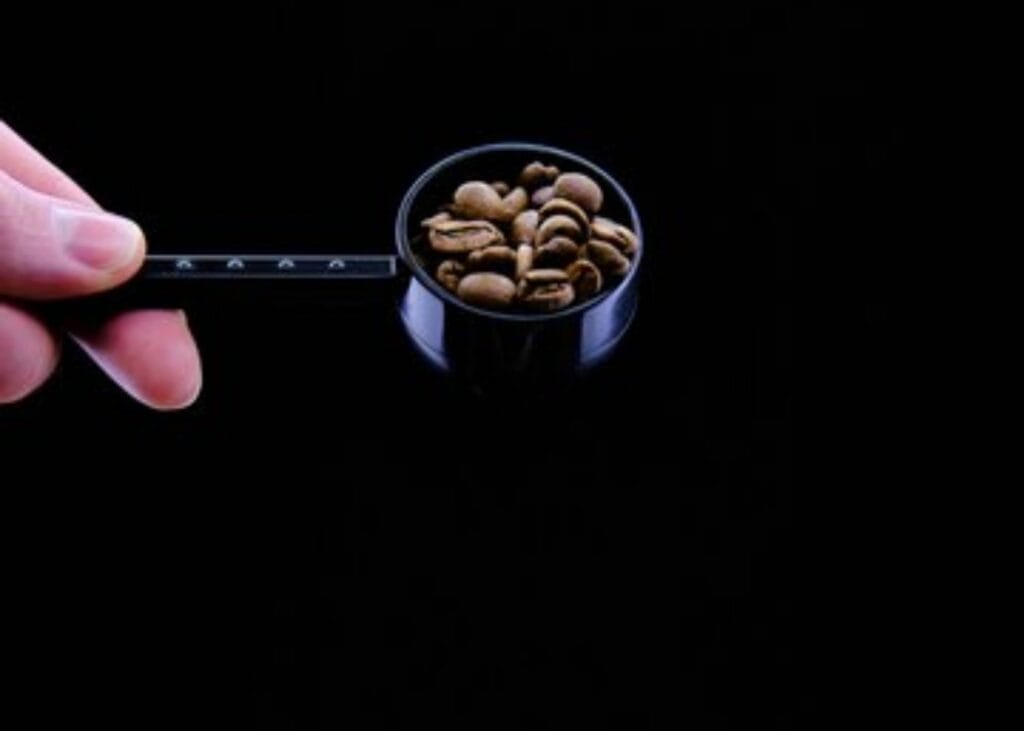
The caffeine level in a single coffee bean depends highly on the type of coffee beans you are using. Two main types, that you would have probably heard of, are Arabica coffee beans and Robusta coffee beans.
Typically, a single coffee bean contains 6 mg of caffeine. But, remember, the caffeine content in a coffee bean depends on the type of coffee bean you are using. For instance, Arabica coffee has about 12 mg of caffeine, while robusta coffee contains about 22 mg of caffeine. These numbers can vary depending on factors like bean size, growing conditions, and processing methods.
Does Eating Coffee Beans Give You Caffeine?
Yes, eating coffee beans does give you caffeine because they contain caffeine naturally. Chewing coffee beans is necessary to release the caffeine, swallowing them will not do the job.
But, eating coffee beans is not a common practice, and doing so might leave you with a bitter experience. To fully enjoy the essence of coffee beans, I recommend you to grind and brew them well, and treat yourself just the right way (which you deserve).
Factors Affecting Caffeine Content
The amount of caffeine found in coffee beans depends on a number of factors other than the type of coffee beans, and being a coffee lover, you should know these. Four important factors are:
Altitude and Growing Conditions: Best flavored coffee beans grow in Bean Belt regions. At higher altitudes, cooler temperatures, and slower growth rates lead to denser beans with more complex flavors but slightly less caffeine. Whereas coffee is grown at lower altitudes, plants face warmer temperatures and more environmental stress and tend to have higher caffeine levels.
Size of Beans: The size of the beans also affects the caffeine level. Larger coffee beans like those of Robusta typically have a higher caffeine content than smaller Arabica beans.
Serving Sizes: The larger the serving size, the more coffee (and caffeine) you are consuming, regardless of the brewing method. As we know by now, one ounce of espresso shot contains 63.6 mg of caffeine, if you increase the serving to two shots, it simply leaves you with 127.2 mg of caffeine, and so on.
Grind Size: Coarse grind, i.e. large, chunky coffee particles results in lower caffeine extraction due to reduced surface area and slower extraction rate. Whereas finely ground beans have higher caffeine extraction due to increased surface area.
Brewing Methods and Caffeine Content
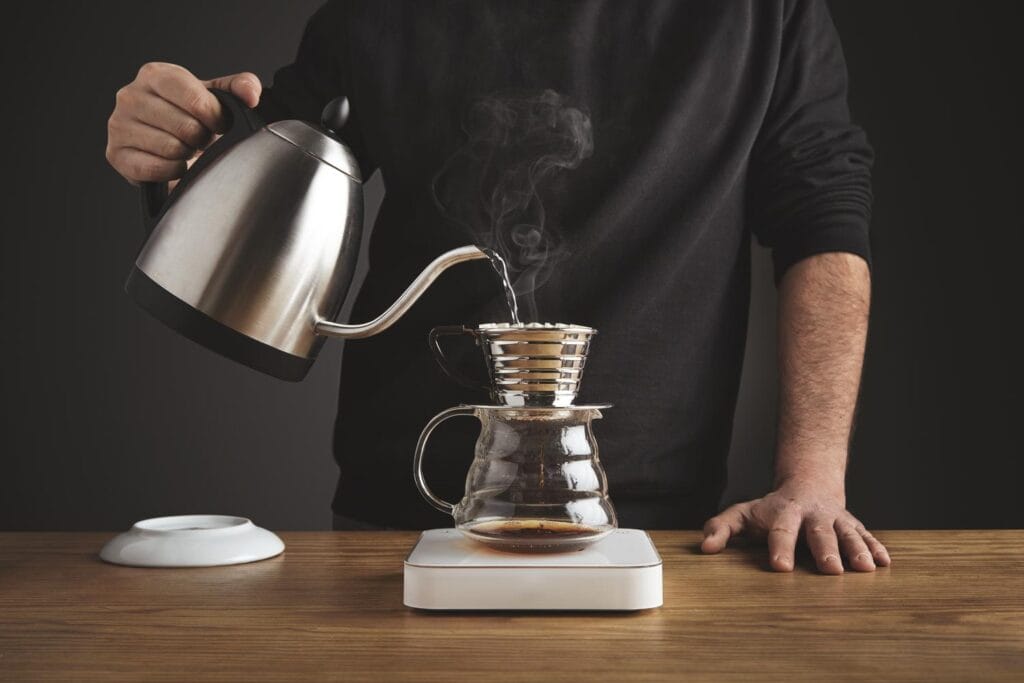
Levels of caffeine in a cup of coffee vary based on the brewing method you choose. Understanding your brewing style helps estimate how much caffeine in one coffee bean!
Drip Coffee: Drip coffee is made by pouring hot water over ground coffee, which then filters through a paper or metal filter, which is why it is also known as filter coffee. Drip coffee typically contains 95–120 mg of caffeine.
French Press: In this method, coffee grounds are steeped in hot water for a few minutes and then separated by pressing down a metal plunger. Typically, a cup of French press coffee contains 80–135 mg of caffeine.
Cold Brew: This method is quite the opposite of the French press method. Here coffee grounds are steeped into cold water for an extended period, typically 12 to 24 hours, and then the grounds are filtered out. A cup of cold brew contains around 100–200 mg of caffeine.
Caffeine by Roast
I am pretty sure most of you have heard of or read different opinions on the caffeine concentration in each of the three roasts, i.e. light, medium, and dark roast. Some people claim that dark roast coffee beans have more caffeine than lightly roasted beans while others claim the opposite.
Let’s simplify it today, once and for all. The caffeine content in the roasted beans can be measured by two ways; volume and weight. When we talk about the volume, a scoop of dark roasted beans grind tends to contain more caffeine than the light and medium roasted beans grind because, during the roasting process, dark roasted beans become lighter and larger, meaning you can fit more beans into the scoop.
On the other hand, when we talk about the caffeine content measured by weight, we see light and medium roasted coffee beans having more caffeine than dark ones because they are denser, i.e. less moisture is lost during the roasting process, so their caffeine concentration is higher than that of dark roasted beans which are lighter in weight.
| Did You Know? |
|---|
| Cappuccino is the most popular coffee drink in the world. This drink is made of one-third hot milk, one-third espresso, and one-third milk foam. |
Caffeine in Espresso
Have you ever said no to an espresso shot because you believe an espresso shot contains more caffeine than a cup of filter coffee? If yes, then let me bust this myth and tell you exactly how much caffeine is in one shot of espresso.

A 1-ounce shot of espresso contains about 63.6 milligrams of caffeine, while an 8-ounce cup of drip coffee contains between 96-200 milligrams of caffeine. If we take 96 mg of caffeine on average in a cup of drip coffee, it gives us 12 mg of caffeine per ounce. Why is there such a big difference between the per-ounce caffeine content in espresso and drip coffee? You are thinking the same right?
The answer is not so complex. The difference is due to how you brew coffee. Espresso is made using high pressure to force hot water through finely ground coffee beans in a short amount of time, typically 25–30 seconds. This process extracts more caffeine per ounce than the drip brewing method.
How Much Caffeine is in Decaf Coffee
Decaffeination is the process of removing most of the caffeine from coffee beans. While decaffeination removes a large portion of caffeine, almost around 97%, decaf coffee still contains some caffeine; though in significantly lower amounts, which is about 2-15 milligrams per 8-oz cup, depending on factors such as the brand, brewing method, and type of coffee bean used.
The Final Sip
So, by now, after gaining all the knowledge about the caffeine content, you would have probably calculated in your mind how much caffeine in one coffee bean. Isn’t it? Let’s just take the final sip.
The caffeine level in your beans or your morning cup of coffee depends on a number of factors including the type of coffee beans, i.e. Arabica or Robusta, altitude and growing conditions of the beans, size of beans, serving sizes, grind size, and the brewing method.
Make sure to enjoy your final sip equally as the first sip. Because life is too short to miss out on the little pleasures.
FAQs About Coffee Bean Caffeine Content
How much caffeine is in 1 espresso bean?
An average espresso bean contains about 6-10 mg of caffeine depending on the type of coffee bean and its roast level.
Is 200 mg of caffeine a lot?
No, 200 mg of caffeine is a moderate dose for most adults. It’s about the amount in 2 cups of coffee and well below the recommended daily limit of 400 mg.
Which coffee has more caffeine?
Light roast coffee has slightly more caffeine than dark roast because it retains more of its original caffeine content during the roasting process. However, caffeine also depends on the coffee type (e.g., robusta beans have more caffeine than arabica).
How much caffeine is in 10 grams of coffee beans?
In 10 grams of coffee beans, there is roughly 100-120 mg of caffeine, depending on the bean variety and roast level.
How much caffeine is in a coffee bean covered with chocolate?
A single chocolate-covered coffee bean typically contains 12-15 mg of caffeine (6-10 mg from the coffee bean and 3-5 mg from the chocolate).
